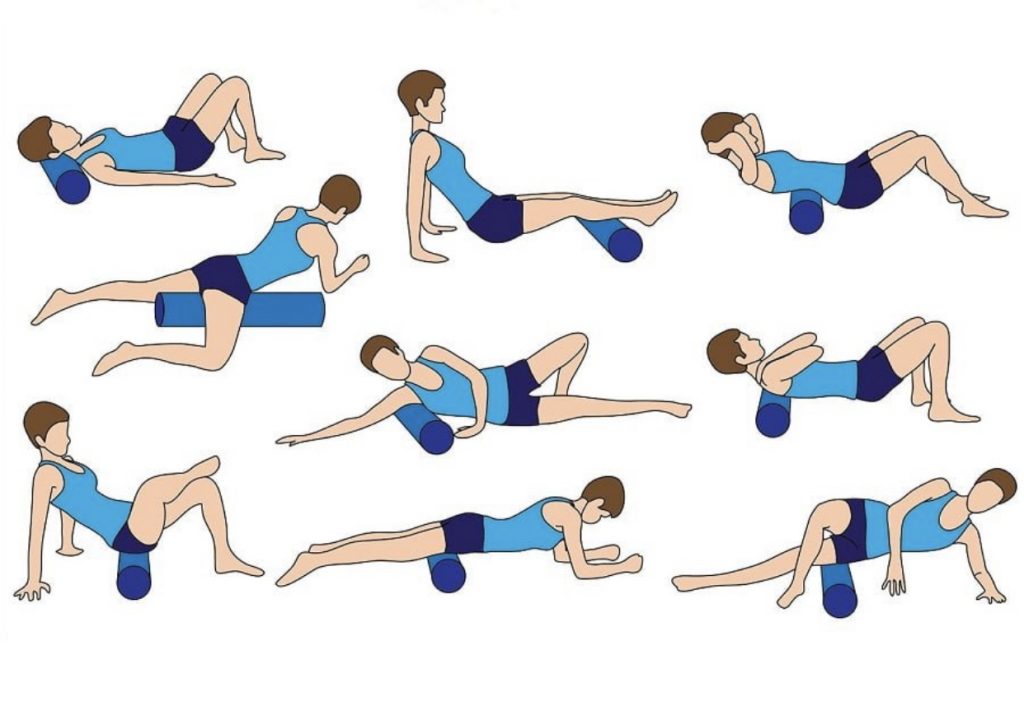
Should you be foam rolling? If you’ve never noticed or heard of them, they are 3- foot long white or colored foam rolls, typically in gyms near the stretching area. And if you also noticed tennis balls being used by trainers and regulars, you might want to give them a try. Rolling, or myofacial release is a simple therapy to help you stretch and get rid of knots in your muscles. It relieves and releases adhesions within the fascia. Akin to massage and trigger -point therapy, the manual pressure of rolling rejuvenates hard working muscles and soft tissue. If your muscles hurt after a hard day of skiing, or have overuse patterns, myofascia-release helps stretch, increase blood blow and increase range of motion to muscle.
Fascia is the connective tissue that covers all muscle. Injury, inactivity, disease or inflammation contributes to a loss of elasticity, resulting in unwanted fibrous adhesions. In other words, tight, sore muscles. Physiotherapists or massage therapists typically spend about 45 percent of their time doing massage therapy on these areas to stretch tight muscles and fascia, loosen scar tissue, and relieve muscle spasms. The good news is that in as little as two minutes, foam or tennis ball rolling can enhance joint range of motion, which is important for healthy movement, particularly if you never stretch.
1. First you roll
Starting your training or competition with foam rolling helps get your muscles warmed up, as it improves your range of motion. Unlike static stretching at the beginning of a workout, which research shows can diminishes performance, foam rolling doesn’t have any drawbacks. In a recent study participants improved their range of motion significantly after foam rolling compared to static and dynamic stretching.
Begin by applying sustained pressure on a roller or ball with your body weight. You can roll any muscle, but hip flexors, hamstrings, calves, quadriceps, and the upper back are typically the tightest areas. Use your own body weight in varying positions. The sustained pressure helps isolate soft tissue areas and release fascial adhesions, similar to a deep massage. What’s more is that the friction between the fascia and the foam roller warms the fascia, making it more fluid and elastic.
2. Stretch and strengthen afterwards
After spending a few minutes rolling, it is important to actively stretch the area you just rolled. Let’s say that you just finished rolling your calf muscle, because it’s tight from skiing. Getting up from the ground and performing a standing calf stretch will further stretch the muscles you just rolled, bringing it back to it’s resting length. Doing so, you’ve just helped fixed shortened, tight muscles into lengthened proper functioning muscles. The final step in a well-rounded corrective protocol would be to do some calf exercises, like standing heel raises, to strengthen all the calf muscles.
3. Don’t run for the shower yet
You might also consider using a roller or tennis ball after demanding exercise. All that hard work creates muscle damage. Recent studies showed participants improved range of motion in the knee joint and hips compared to control groups.
And lastly, there is evidence that foam rolling can also help you reduce fatigue post-exercise and possibly improve long-term performance.
Click on link to see tennis ball rolling –
As seen in
https://www.mtexpress.com/wood_river_journal/features/fitness-guru/article_8835b3e8-5f0a-11ea-936a-e7ba628a730c.html
